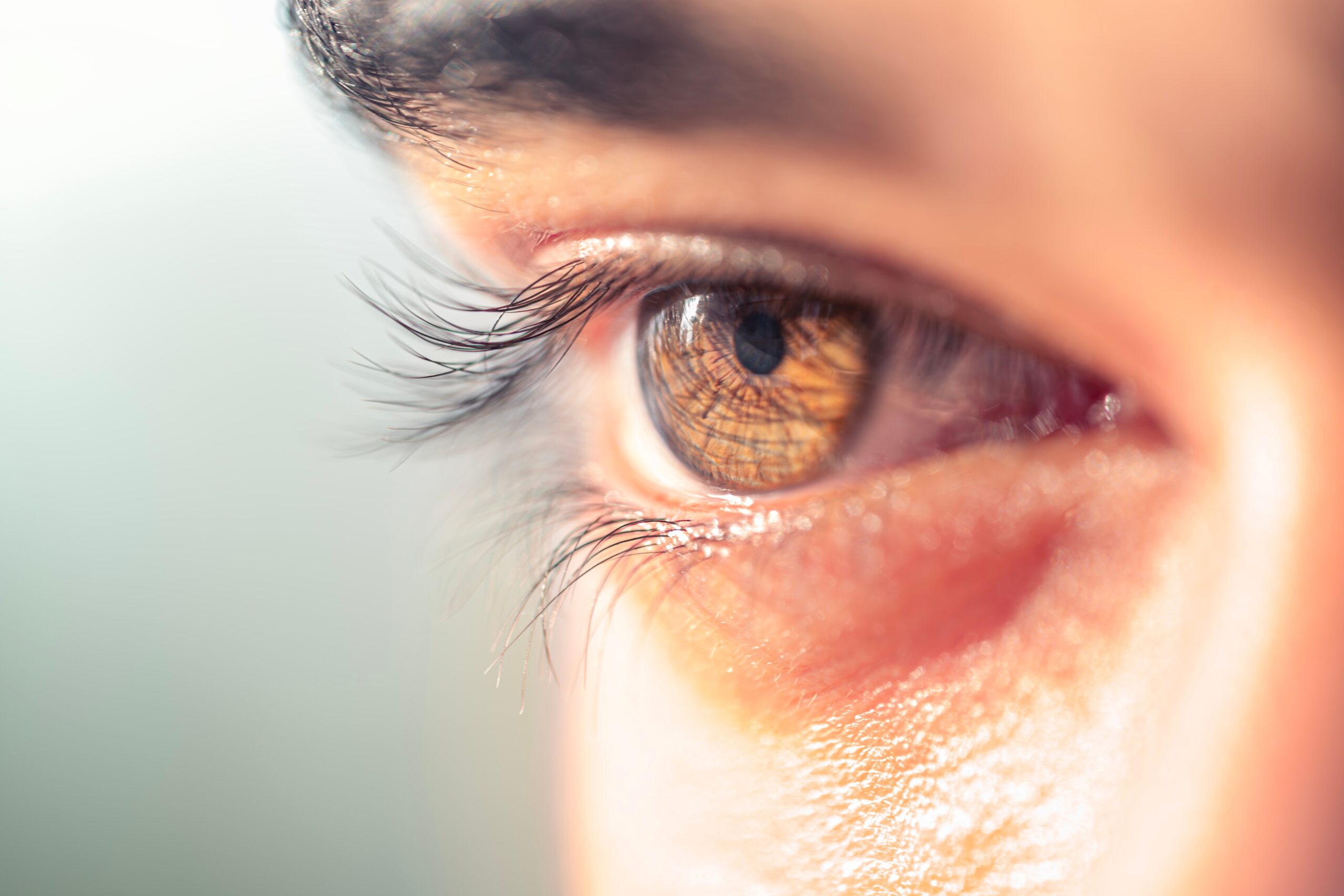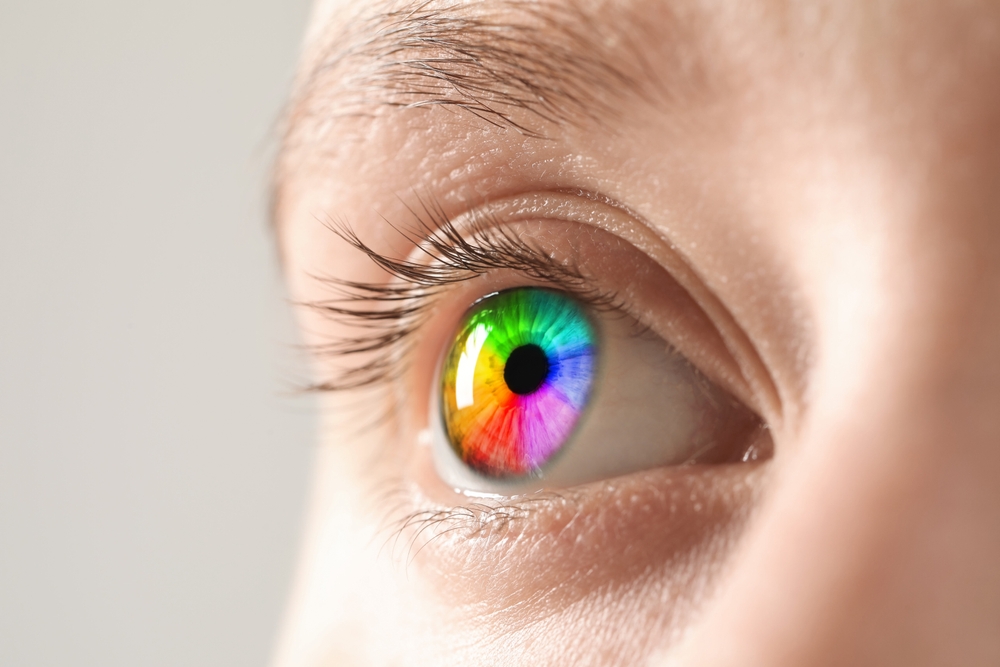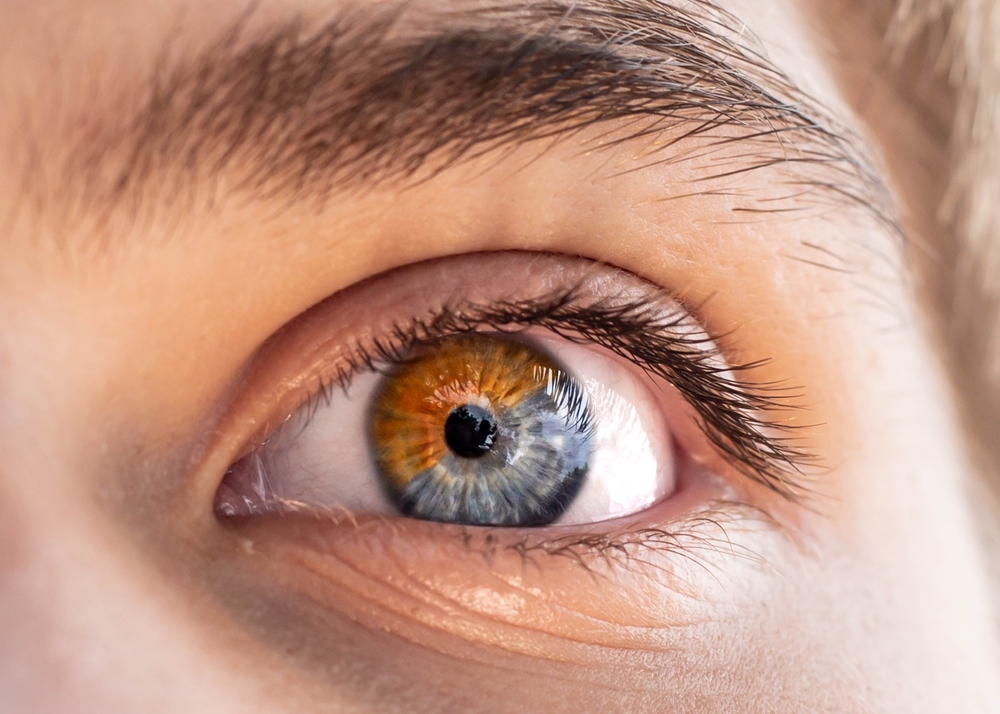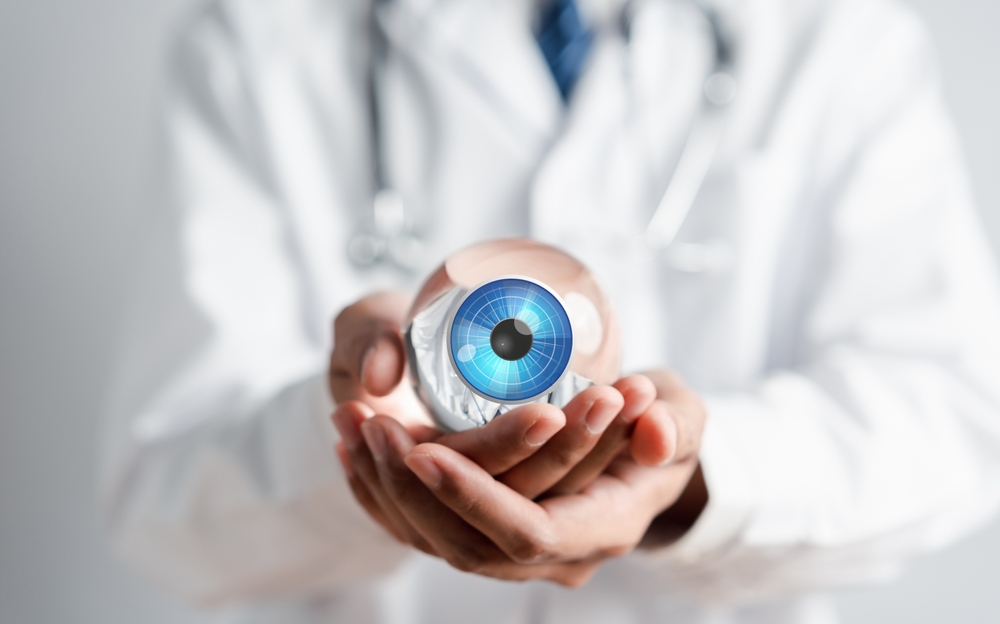This New Eye Drops Could Clear Cataracts Without Surgery, Giving Millions a Safer Way to Restore Sight

What if the solution to blindness came not from a surgeon’s scalpel, but from a single drop of liquid light?
For millions of people, cataracts are not just a medical condition they’re a slow fade into darkness. Vision blurs. Colors dull. Faces become shadows. And while modern cataract surgery offers a second chance at sight, the reality is far more complex: access is unequal, the cost is high, and for many, the fear of going under the knife is paralyzing.
Across the globe, more than 65 million people are living in this twilight zone of vision loss. That’s nearly the entire population of the UK walking through a world perpetually out of focus.
But what if there was another way?
Scientists are now on the brink of a breakthrough that sounds like science fiction: an eye drop that could restore clarity to clouded eyes no surgery required. Early research in mice is showing remarkable promise, and the implications stretch far beyond the lab. This isn’t just about clearer sight. It’s about changing the way we age, how we deliver care, and who gets to live life in full color.
A Global Blind Spot
Sight is often the sense we take most for granted until it begins to slip away. Cataracts, the clouding of the eye’s natural lens, don’t strike like a lightning bolt. They creep in, gradually blurring the world like fog on a windowpane. What starts as a little trouble seeing at night or needing more light to read can quietly grow into a condition that robs people of their independence, identity, and joy.
And it’s happening everywhere.
According to the World Health Organization, over 65 million people across the globe are living with vision loss due to cataracts. In many of these cases, the condition progresses to blindness not because it’s untreatable, but because the treatment is out of reach.

Cataracts are the leading cause of blindness worldwide. While age is the most common contributor, they don’t discriminate. Prolonged exposure to UV light, certain medications, diabetes, smoking, and even eye injuries can all trigger the formation of cataracts even in younger people. And when left untreated, the consequences are far more than visual. Studies show that people with cataracts face a higher risk of depression, falls, and even cognitive decline.
Now here’s the paradox: cataract surgery is one of the most common and successful medical procedures in the world. A quick, outpatient operation, often taking less than 30 minutes, can restore vision almost instantly. But millions never get that chance.
In rural villages without clinics, among elderly patients too frail for surgery, or in families who simply can’t afford the cost even a miracle procedure becomes meaningless. Human potential dims not for lack of cure, but for lack of access.
That’s the global blind spot we’re facing not just the condition itself, but the vast inequity in who gets to see again.
Why Surgery Isn’t Always the Answer

For millions around the world, cataract surgery remains an option in name only. It’s not fear alone that holds people back though the idea of eye surgery can be terrifying, especially for the elderly. It’s not just logistics either though transportation, follow-up care, and surgical capacity pose major challenges. It’s a deeper issue of inequity, access, and affordability.
In low-income regions, cataract surgery is often unavailable, unaffordable, or simply too far away. A lack of trained surgeons, sterile operating rooms, and basic medical infrastructure means many patients never even get a diagnosis, let alone treatment. In India, for example, where cataracts account for more than half of blindness cases, rural populations often go untreated despite living just hours from urban hospitals.
Even in developed countries, some people delay surgery due to other chronic health issues, lack of insurance coverage, or anxiety over the procedure itself. And for those with congenital or pediatric cataracts especially infants and young children removing the lens surgically can disrupt the natural development of the eye.
There’s also a quiet truth that doesn’t often make headlines: surgery, while highly effective, is still surgery. It carries risks like infection, inflammation, or complications from anesthesia. And once the natural lens is removed, it’s gone for good.
So when we talk about a non-surgical alternative like an eye drop that could preserve or even restore the natural lens we’re not just talking convenience. We’re talking about empowering people with a choice, removing barriers, and offering sight without sacrifice.
How These Eye Drops Work
These eye drops may eliminate the need for glasses and contact lenses https://t.co/d0NbRvtH9J
— Vala Afshar (@ValaAfshar) March 26, 2023
To understand how, we need to look at what causes cataracts on a microscopic level. The eye’s lens is made up of tightly organized proteins called crystallins mostly alpha-, beta-, and gamma-crystallins. These proteins are responsible for keeping the lens transparent and flexible, allowing it to focus light properly onto the retina.
But as we age, or under stress from conditions like diabetes or UV exposure, these crystallins start to break down. They misfold and clump together into dense, opaque clusters that scatter light, resulting in the cloudiness we know as a cataract. Imagine the lens like a clear glass window—now slowly filling with frost from the inside out.
Enter VP1-001 a specially engineered compound known as an oxysterol, derived from cholesterol. While the name might not sound revolutionary, its effects could be. This molecule acts as a pharmacological chaperone, helping misfolded alpha-crystallins regain their correct shape and become soluble again. In simpler terms, it helps clean up the protein “clumps” and restores the lens’s natural clarity.
In animal studies particularly with mice genetically predisposed to develop cataracts scientists applied VP1-001 as a topical eye drop. The results were promising:
- 61% of treated lenses showed optical improvement.
- 46% had a measurable reduction in lens opacity.
- Some lenses even regained their refractive index gradient, meaning they could once again focus light properly.
The key advantage here lies in VP1-001’s ability to penetrate the lens tissue. Its molecular structure and solubility make it more effective than previous candidates like lanosterol, which struggled to reach therapeutic concentrations in the eye. Not only did VP1-001 reduce cloudiness, but it also appeared to stabilize all three major lens proteins alpha-, beta-, and gamma-crystallins making it a broad-acting solution rather than a narrow fix.
Dr. Usha Andley, one of the leading scientists behind this research, emphasizes that the goal isn’t just symptom management. It’s to halt or even reverse the root cause of lens opacity something no existing therapy does without removing the lens altogether.
Other studies led by researchers like Prof. Barbara Pierscionek have gone further, using advanced optical imaging to confirm that the treated lenses not only became clearer but also regained some of their original focusing power, a critical step toward functional, meaningful vision.
The Limits and the Promise

The idea of reversing cataracts with an eye drop sounds like a modern miracle and early research has painted a hopeful picture. But real progress in science rarely moves in a straight line. Before this potential therapy can change lives, it must first pass through the narrow gates of scrutiny, replication, and real-world testing. Let’s start with the limitations.
While VP1-001 has shown promising results in mice, it’s still in the preclinical stage. No human trials have been completed to date. Animal models offer valuable insights, but translating those effects to human biology is far from guaranteed. The human lens is larger, the disease more variable, and the eye’s protective barriers more complex. What works in a mouse’s eye doesn’t always make it to market.
Then there’s the issue of scope. Cataracts are not a one-size-fits-all condition. They can develop due to aging, metabolic disorders, trauma, genetics, oxidative stress and more. VP1-001 and similar oxysterol-based treatments target cataracts caused by specific protein mutations namely those involving alpha-crystallin misfolding. While this mechanism is common in age-related cataracts, it’s not the only one. As Dr. Haci Ugur Celik of the University of Rochester points out, the biochemistry of cataract formation also involves oxidative imbalance, stress signaling, lipid peroxidation, and multiple molecular pathways. Targeting just one piece of the puzzle won’t solve the whole thing.
Moreover, these drops aren’t a complete substitute for what surgery currently offers. As Dr. Ashley Brissette, a cataract surgery specialist at Weill Cornell Medicine, explains, cataract surgery often includes implanting an artificial lens with a custom prescription. This not only clears the cloudiness but can also correct refractive errors like nearsightedness or astigmatism something eye drops won’t do. In other words, drops may restore clarity, but not perfect vision.
And then there’s the challenge of delivery. Ensuring that VP1-001 or any similar compound stays in the lens long enough, at high enough concentrations, without irritating or damaging other parts of the eye is a significant scientific hurdle. Researchers are exploring delivery vehicles, like cyclodextrins, and developing newer non-steroidal compounds that could improve both safety and efficacy but it’s a work in progress.
Still, it’s important to hold space for the promise.
This isn’t false hope it’s early hope. The kind that fuels innovation. The kind that reminds us progress is possible. The kind that says, even if this version doesn’t reach the finish line, it’s pushing the field forward in powerful ways.
As Prof. Pierscionek put it, this is the first research of its kind to show improvement in lens optics using a compound like VP1-001. That alone is a milestone.
Natural Approaches and Lifestyle Support

While the promise of cataract-clearing eye drops grows, the reality is this: there is no magic bullet yet. And for many living with early-stage cataracts or hoping to prevent them, how we live still matters. Science is racing forward, but nature has its say too.
Below are practical, evidence-supported approaches that can help slow cataract progression, protect eye health, and support vision especially for those not yet ready or able to pursue surgery or experimental treatments.
Protect Your Eyes from UV Damage
Sunlight is a silent catalyst. Overexposure to ultraviolet (UV) rays accelerates cataract development by breaking down lens proteins through oxidative stress. The solution? Simple but powerful.
- Wear sunglasses that block 100% of UVA and UVB rays.
- Use a wide-brimmed hat when outdoors for extended periods.
- Choose UV-protective lenses if you wear glasses regularly.
Just like sunscreen protects the skin, UV-blocking habits protect your sight and the earlier you start, the better.
Fuel Your Vision with Antioxidants
Your eyes are what you eat. Diets rich in antioxidants have been shown to reduce oxidative stress, one of the major contributors to cataract formation. While no food can reverse a cataract, many can help defend against its progression.
Focus on:
- Leafy greens (spinach, kale): rich in lutein and zeaxanthin.
- Carrots and sweet potatoes: packed with beta-carotene (vitamin A).
- Citrus fruits, berries, and bell peppers: high in vitamin C.
- Nuts and seeds: good sources of vitamin E and omega-3 fatty acids.
These nutrients protect the eye’s delicate structures, including the lens, from damage over time. A healthy plate is one of your best prescriptions.

Quit Smoking for Your Eyes, Too
It’s no secret that smoking harms nearly every part of the body but many don’t realize that it also doubles the risk of cataracts. Tobacco smoke increases free radicals and reduces antioxidant levels in the lens.
If you’ve been looking for another reason to quit, let this be one: your vision your literal window to the world depends on it.
Manage Underlying Health Conditions
Cataracts don’t appear in isolation. Chronic conditions like diabetes and hypertension can fast-track their development by increasing inflammation and damaging blood vessels in the eyes.
- Keep blood sugar under control if you’re diabetic.
- Monitor and manage blood pressure consistently.
- See an eye doctor regularly if you have these conditions.
Health is connected managing one issue often protects another.
Routine Eye Checkups: The Unseen Lifeline
Even if your vision seems fine, regular eye exams are essential. Cataracts develop slowly, and early changes in the lens may not be noticeable at first. A professional can detect subtle shifts and recommend timely steps whether it’s glasses, lighting adjustments, or preparing for eventual treatment.
Think of it like going to the dentist not because something’s wrong, but to keep it that way.
A Vision for the Future
The thought that blindness caused by cataracts a condition afflicting tens of millions could one day be reversed without a single incision is more than scientific progress. It’s human progress. It’s a promise that medicine can be gentler, more accessible, more equal.
These experimental eye drops are not just about restoring sight. They’re about restoring freedom, especially for those who have quietly lived in the shadows too afraid, too far, or too financially strapped to access care. Imagine a grandmother in a rural village no longer fearing blindness because help doesn’t come in the form of surgery but in a vial small enough to fit in her hand. Imagine a child born with cataracts whose eyes are allowed to grow naturally because invasive procedures are no longer the only option.
Yes, there is still a long road ahead. Human trials, regulatory hurdles, dosage refinement it’s all part of the journey. But what’s revolutionary here is the direction we’re heading. We’re not just treating a lens; we’re reframing what’s possible for aging, for global health, and for millions who’ve been told to accept the blur.
This story isn’t only about a drug. It’s about the belief that people everywhere regardless of geography, income, or fear deserve to see the world clearly.
And if a single eye drop can bring that world back into focus, then we are witnessing something profound: a future where sight is not a privilege, but a right restored quietly, powerfully, one drop at a time.
Loading...

